Over the weekend of May 28-31 the Grand Prix Drivers Club held their General Assembly meeting in the Mercedez-Benz Museum in Stuttgart with the re-election of Howden Ganley as President of the Club and Emanuele Pirro and Teddy Pilette as Vice-Presidents.
[Row][Column]
Apart from the Assembly itself various visits were organised including both the Porsche and Mercedes-Benz museums.
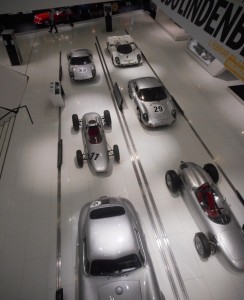
The Porsche museum, housed in an ultramodern building hard by the Porsche factory, is a visit any enthusiast must make on a visit to Stuttgart. Despite its size it is well organised in chronological order from Ferdinand Porsche’s first car, the Lohner Porsche powered by a battery driven electric motor. A further development of this came when Porsche designed an electric motor into a wheel and these were used in a later Lohner-Porsche, called “Semper Vivus” which used a petrol motor and electric motors on the front wheels so it could be claimed to be the first hybrid.
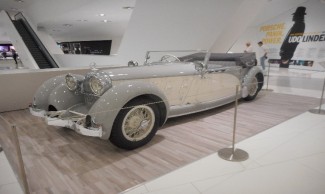
What is impressive is that right from the first true Porsche bodywork done in 1938 there has been a distinctive Porsche silhouette which has not fundamentally changed for over seventy years. A good example is the Porsche 911 – originally called the 901 until it was found that Peugeot had registered three figure numbers with a zero in the centre as a company trademark for road cars. Note this did not apply to racing cars which were not used on the road so Porsche continued with 904, 906 etc. in racing.
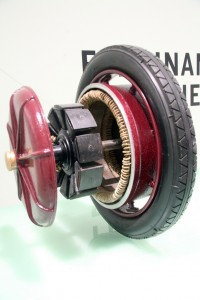
One car which stands out, however, is one of Ferdinand Porsche’s most impressive designs, the Austro-Daimler Bergmeister and the one on show was fitted with stunning Armbruster coachwork.
When it came to the racing cars GPDC member David Piper was in his element as there were a number of Porsche 917’s on display including the car shared by members Hans Herrmann and Richard Attwood to win Le Mans in 1970.
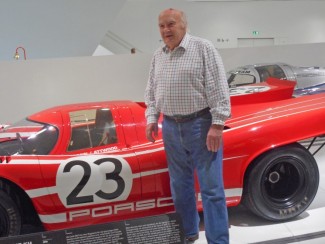
Another interesting car at the Porsche museum was their 2005 RS Spyder developed alongside Roger Penske for American sports car racing. It was a stunning success winning all four of its races yet few people remember it in Europe.
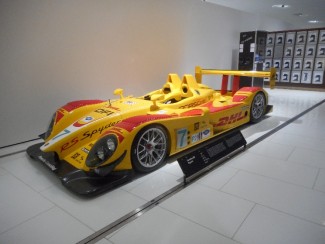
[/Column][Column]
The Club members also visited the main production line in the factory next door to the museum. It was this that underlined the precision and skill with which the Porsche road cars are built. Despite being in one of the busiest areas of Stuttgart the cars are brought together with automated lines using bridges between one factory and the next bringing engines and bodies together. Porsche, however, have split production of the various models between this and other factories around Stuttgart but this is the iconic and original Porsche factory.
The following day GPDC members were given a private view of the Mercedes Benz Heilige Halle – see separate story – which is not open to the public and holds a vast collection of Mercedes-Benz and Mercedes-Benz related race cars.
With the Club’s annual meeting to be held in the main and modern Mercedes-Benz museum there was time in the morning to go round this building.
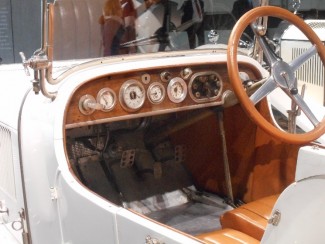
It is not only architecturally challenging but crammed from floor to ceiling with one of the most comprehensive collections covering the history of one of the world’s oldest motor manufacturers. Designed imaginatively in a spiral you take the futuristic lifts to the topmost floor and then work your way down through the years. It is only in this way you can realise the impact Mercedes-Benz have had on the history and evolution of the car from over one hundred years ago to today. Some of the exhibits have been illustrated here.
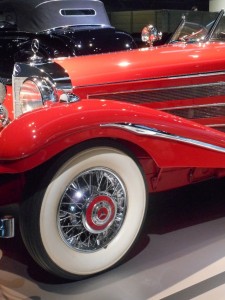
The museum also contains countless artefacts in glass cases that are as fascinating as the cars themselves. For example in one case there are the stop watches used by the legendary grand prix team manager Alfred Neubauer and next to them the open pages of his notebook with observations on races, cars and drivers. Elsewhere in the section devoted to racing cars there are examples of racing clothing used through the years from knee length leather jackets, through the pale cotton overalls and the very latest Nomex racing suits. It is certainly one of the finest motor museums in the world.
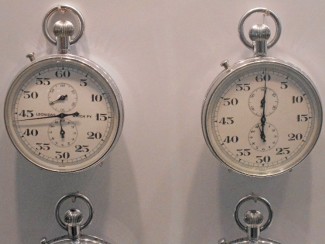
The General Assembly finished with a dinner in the rooftop restaurant at the Museum completing a hectic but memorable weekend.
[/Column][/Row]
